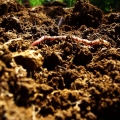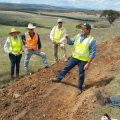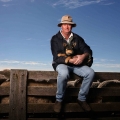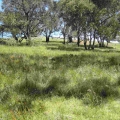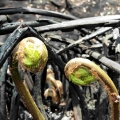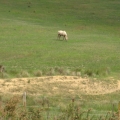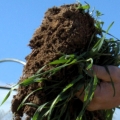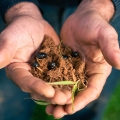Steps to Save Swainsona!
Published 30th September 2022. Written by Maddison O’Brien
In early August 2022, more than 200 Small Purple-Pea (Swainsona recta) seedlings were planted near Lue on Wiradjuri Country as part of a five-year project led by Local Land Services to save this stunning, rare and endangered species.
Over the past two years, Small Purple-Pea seed has been collected under licence from various sites across the Central West and Central Tablelands. The seeds were lovingly grown into seedlings by the talented horticulturalists of the Australian National Botanic Gardens in Canberra and have been planted at protected sites with existing Swainsona recta populations to help boost genetic diversity and the long-term viability of the plant communities.
This milestone marks a more positive outlook for the beautiful flowering legume and demonstrates innovation and collaboration to protect this unique species.
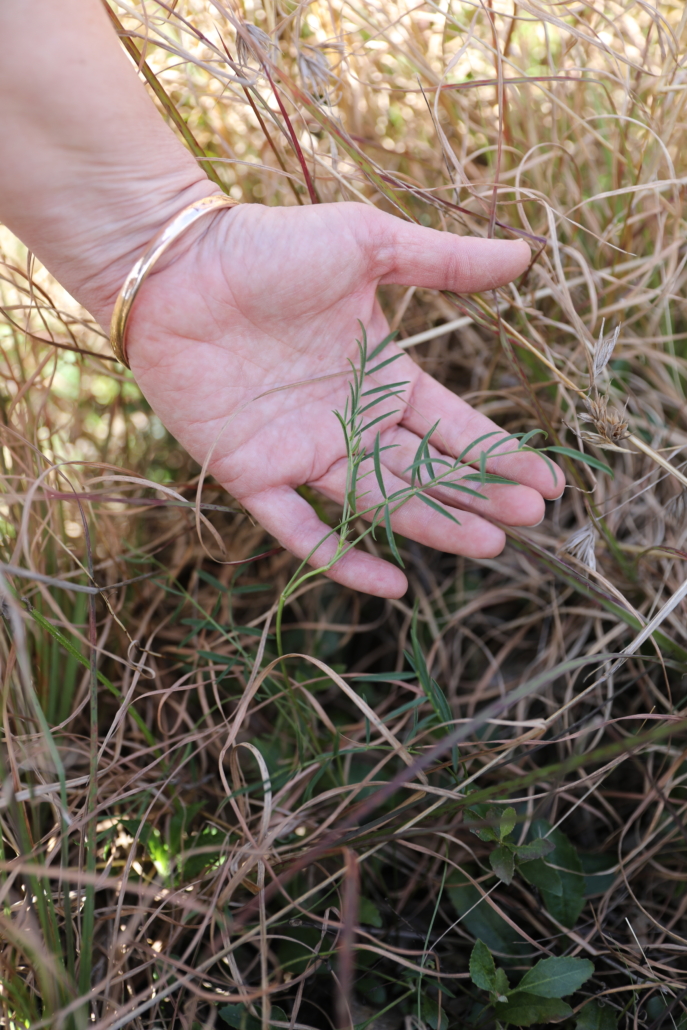
700 Swainsona recta seedlings have been planted across the Central Tablelands and Central West to protect the species genetic diversity and long-term future Photo credit: Simone Kurtz
Local Land Services and the Australian National Botanic Gardens have teamed up to deliver this project to help the Small Purple-Pea. This project is supported by Central Tablelands and Central West Local Land Services through funding from the Australian Government’s National Landcare Program.
Leonie Coleman, Senior Land Services Officer with Local Land Services, said this is a pinnacle moment of the project that started in a drought with worryingly sparse signs of the Small Purple-Pea. “With its beautiful purple flower, you would think it would be hard to miss this small, show-stopping plant, but while once widespread, this plant has had a tough time over the last 100 years.”
Scientists have found that when populations of Small Purple Pea are too small in number, the viability of the seed to germinate decreases. So the tedious time collecting seeds from as many known unique populations was crucial to this project’s long-term success.
The Small Purple-Pea is described as a rigidly erect, slender forb which grows up to 35 cm tall. It has a taproot extending up to 60cm into the soil. The pea-shaped flowers are a sight to behold and are followed by the seed pods. These miraculous plants are known to be tolerant of fire and can live as long as 20 years!
Swainsona recta have become a flagship species associated with the critically endangered ecological community known as Box Gum Grassy Woodlands. We often think of the old-growth gum and box eucalypts in this environmental community. Swainsona recta reminds us that the understorey and ground layer in these incredibly diverse habitats are nothing short of fascinating and need our protection. Now is the perfect time to be out walking, swooning at orchids and wildflowers in full bloom. If you’re lucky enough to come across some Small-Purple Pea, make sure to let Local Land Services know!



